While the US has been on this base for a relatively short period of time, the base has been around since the 1930’s.
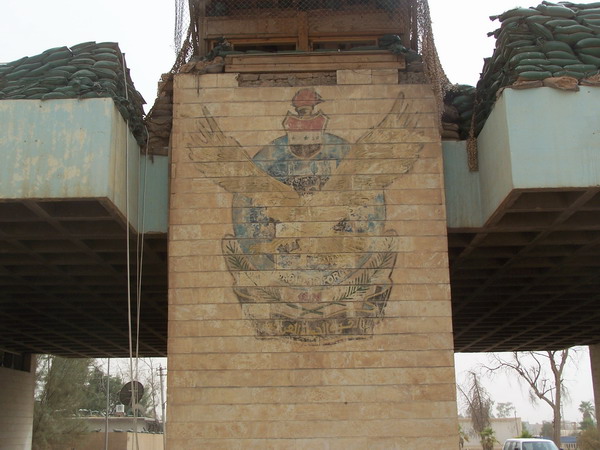
One of the areas we are responsible for is minor construction. So, we’ve been busy building things all over the base. This is one of our larger projects. We built several offices and a conference room for the Army. Nail guns are very handy for framing walls.
Although Clay (holding the nail gun) is an entomologist, he helped out with a lot of the construction. It just shows how multi-skilled the guys are.
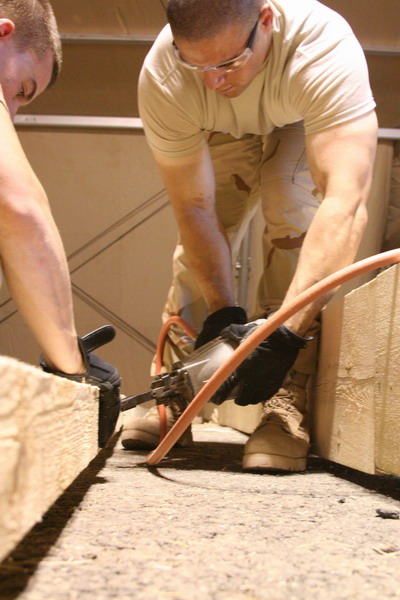
Chris was my project lead for a couple large projects (including this one). He did a great job. Actually, all my Airmen have been an outstanding team. Any success we’ve had is directly because of their skills and hard work.
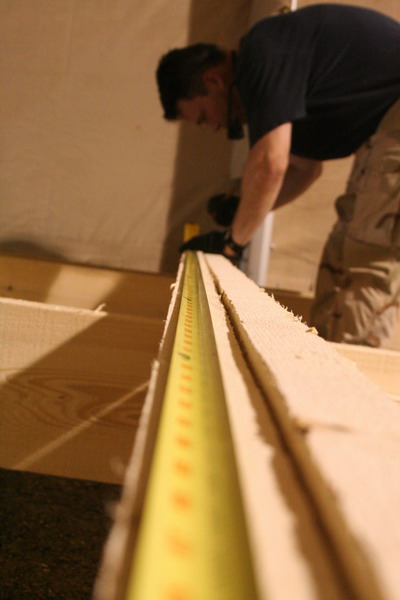
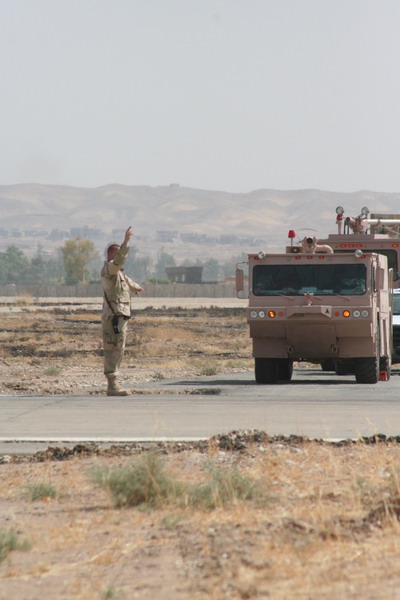
Although Rob is our first sergeant and responsible for the morale, welfare, and conduct of all enlisted members of the squadron, he is also a power pro expert and helped out the guys in the shop quite a bit.
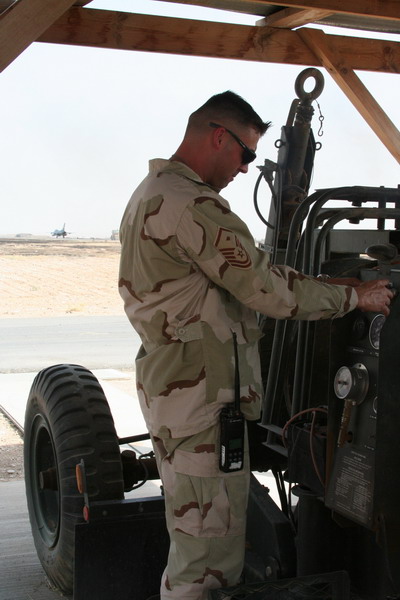
He even taught a medic, Yvonne, how to run some of the equipment.
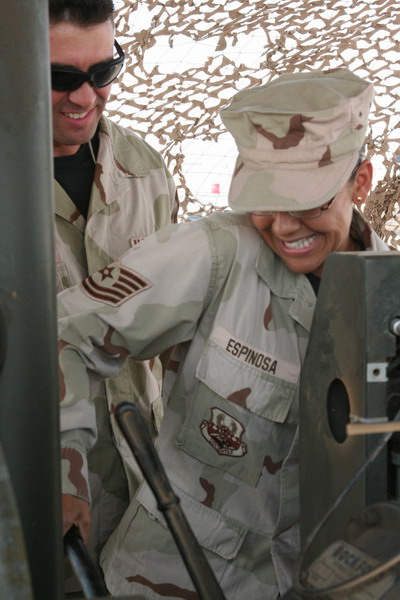
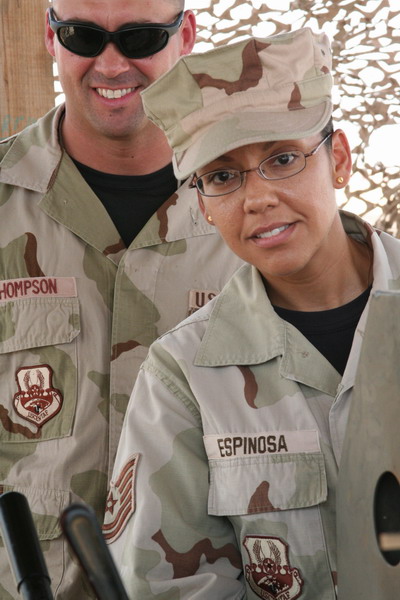
You can see the sort of dust storm the helicopters kick up.
My Structures Airmen are not only skilled with wood, they can also create metal works of art.
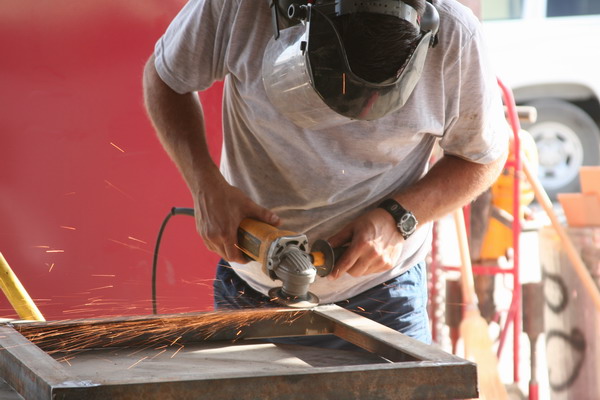
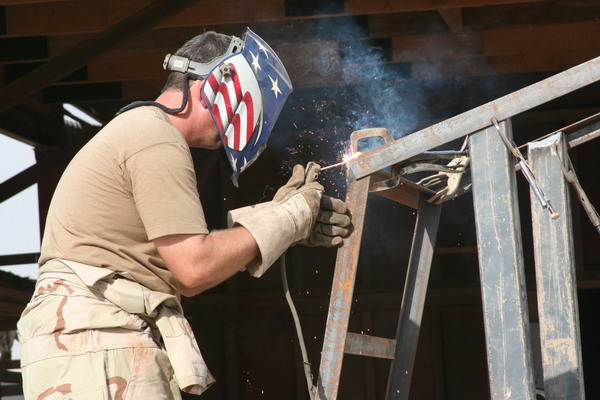
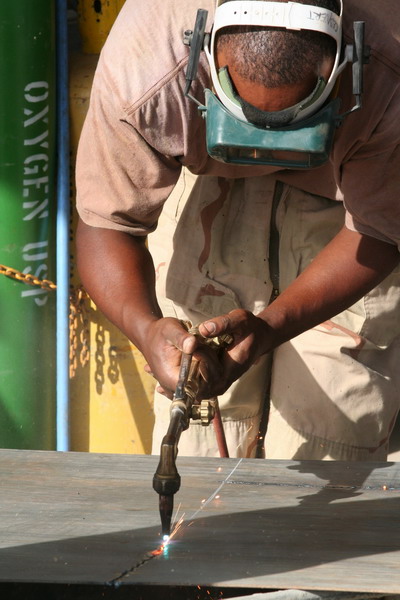
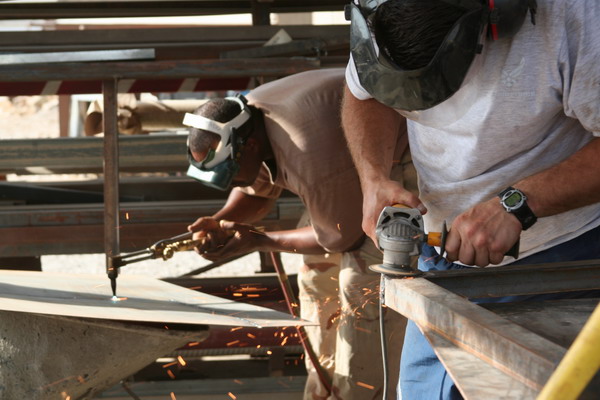
Plumbers have, without question, one of the dirtiest, under-appreciated, but most important jobs. The picture below is of a pump that failed on the sewage line. They worked through the night to fix it and ensured that sewage kept flowing where it was supposed to. People flush the craziest things down the toilet… I’ll just leave it at that.
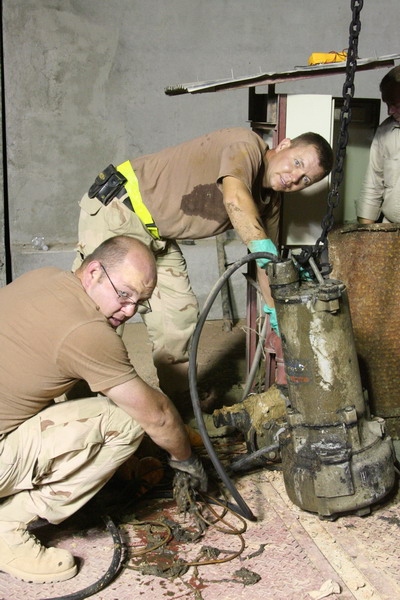
The utilities shop also fixes all manner of water leak, break or other utilities problem.
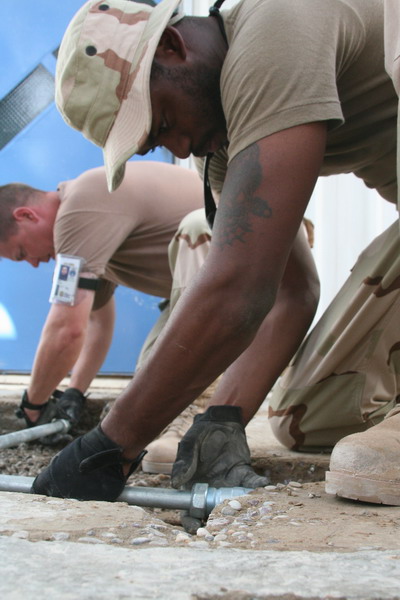
This is a picture of the infamous camel spider. It has gained much ill repute from a number of urban legends, including an email hoax that shows a photo of two huge spiders, each the size of a man’s calf, and is accompanied by an alarming note. The sender said his or her friend (or friend of a friend) knew a soldier stationed in Iraq who had said that these spiders could inject a sleeping soldier with anesthetic, then chew out a chunk of flesh. However, a 2004 National Geographic article http://news.nationalgeographic.com/news/2004/06/0629_040629_camelspider.html enlightens us about the truth of these fascinating creatures. However, here are a few more of the myths propagated by the hoax:
“Camel spiders are said to run as fast as 25 miles an hour (40 kilometers an hour), jump six feet (two meters) in the air, and lay their eggs inside a camel’s belly (hence the name camel spider).”
In fact, camel spiders (also known as wind scorpions) aren’t even spiders (although they are in the 8-legged arachnid family). They’re actually solpugids, or solifugids and don’t have any venom glands. The largest species are 6-8 inches long (the one below is about 4 inches). Also, they are fast, but often are only running to seek shade from the blistering desert sun. When I got close for the picture, this one wanted to run into my shadow.
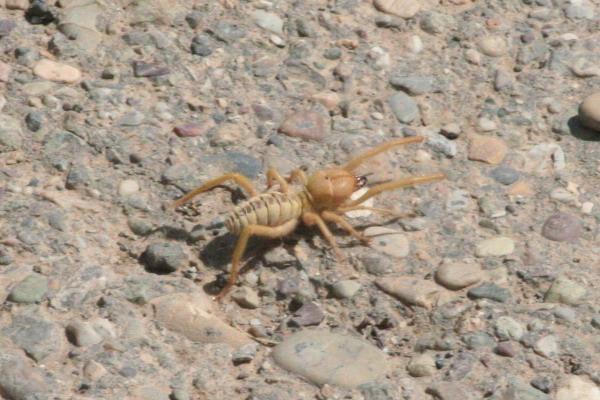
This fledgling barn owl was adorable and we relocated him to another part of the base where he could learn to fly away from people (he kept running into things as he flew around).
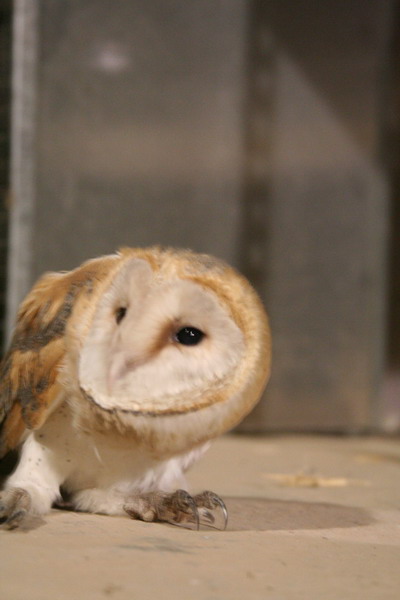
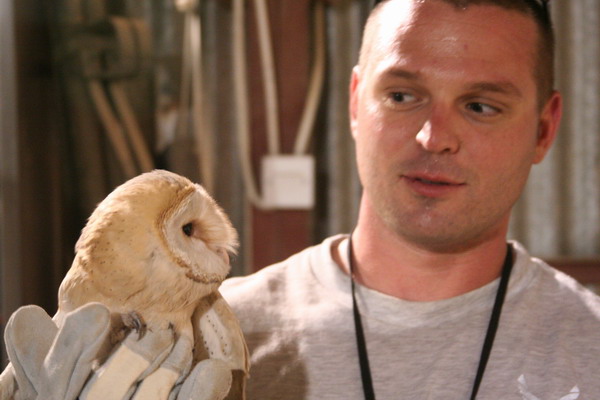
Well, that about sums up things that have been happening over the last 4 months. Of course, I’m always happy to explain further. Please feel free to leave a comment/question and I will email a response.
–Jim
3 thoughts on “Iraq — day to day, part 2”
Comments are closed.

I love the natural wildlife shots. You are becoming a great photographer and storyteller.
James,
It has been a pleasure working with you the last four months. We can only hope that I get stationed in Germany after my tour in Hawaii is over.
If I can do anything for you, let me know.
Rudy
Wow, what a new perspective. I am amazed at the wonderful pictures and new things you show. Thank you so much for the new view.
Shawna and Mike